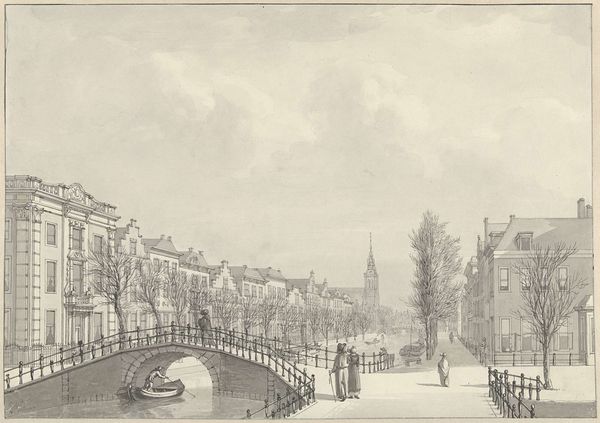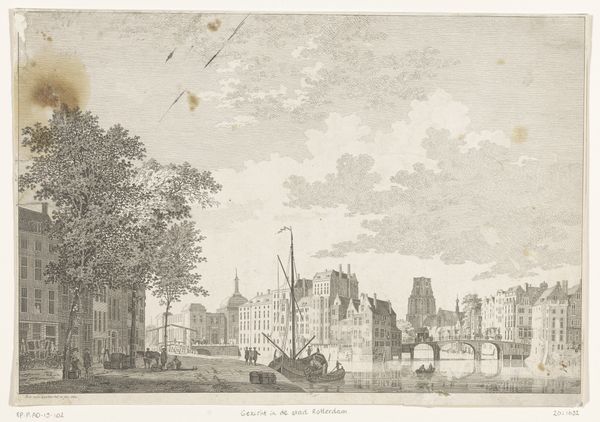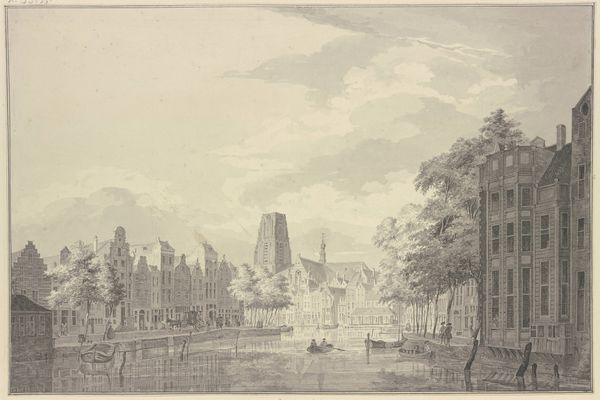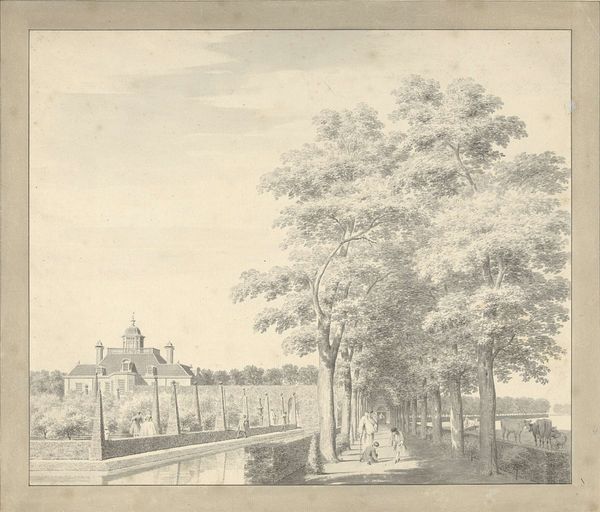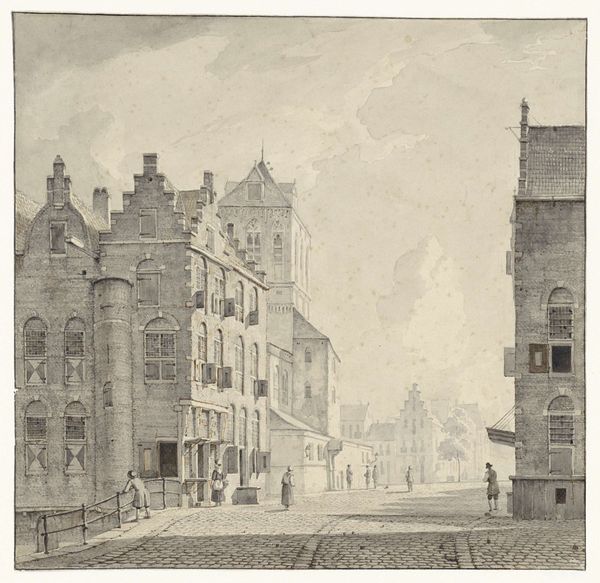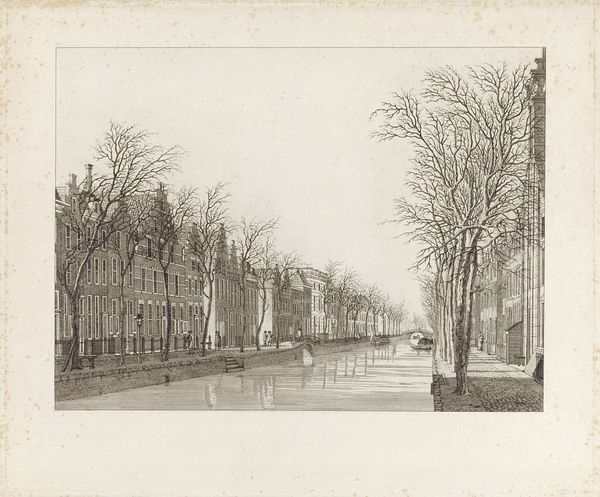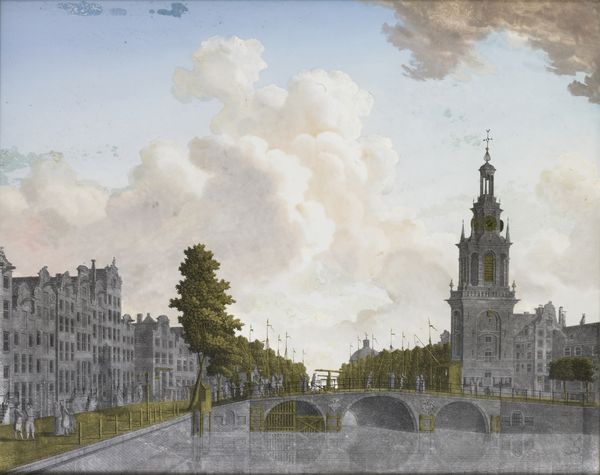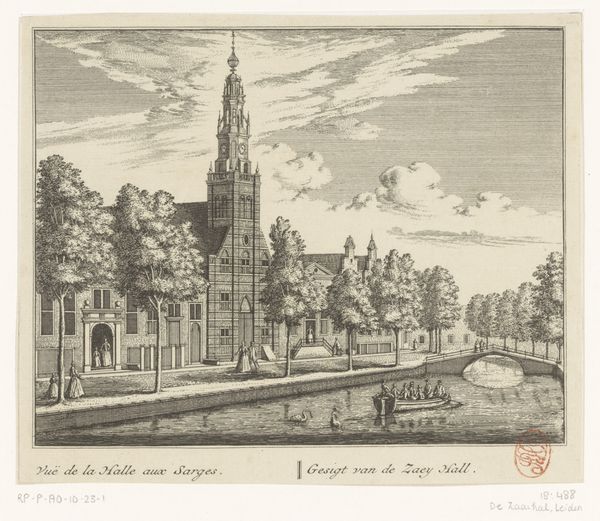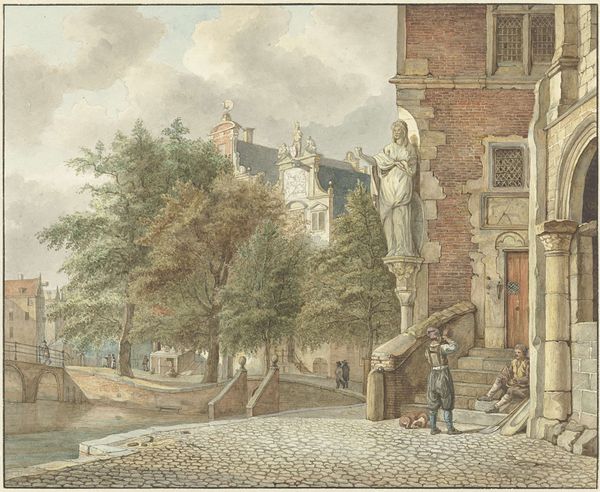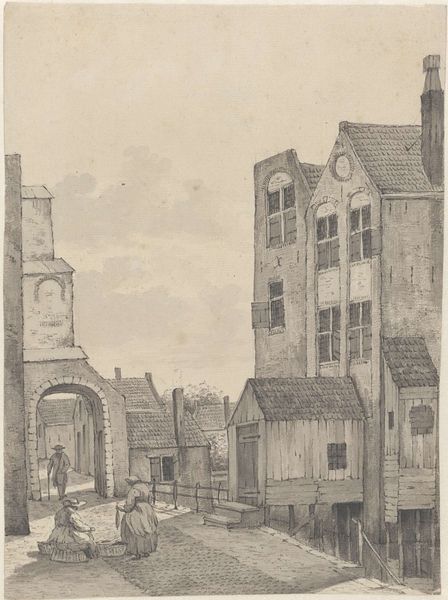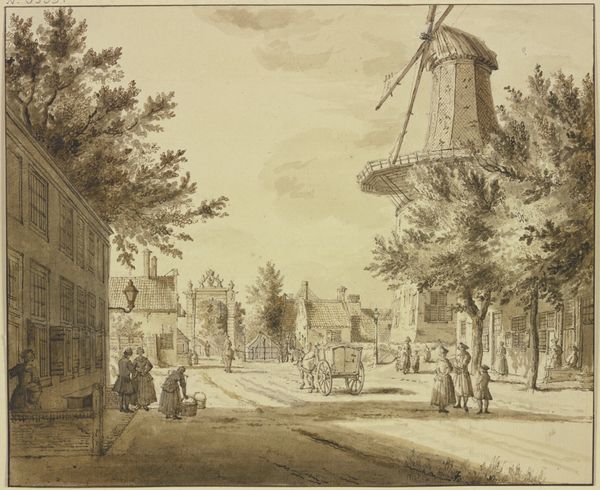
drawing, paper, ink, pen
#
architectural sketch
#
landscape illustration sketch
#
drawing
#
mechanical pen drawing
#
pen illustration
#
pen sketch
#
old engraving style
#
landscape
#
paper
#
linework heavy
#
ink
#
romanticism
#
pen-ink sketch
#
pen work
#
pen
#
cityscape
#
storyboard and sketchbook work
#
realism
Dimensions: height 215 mm, width 236 mm
Copyright: Rijks Museum: Open Domain
Curator: Looking at Gerrit Lamberts' "View of the Krom Boomsloot," created around 1817, a drawing rendered in pen and ink on paper, my first reaction is tranquility. Editor: It has a melancholic beauty to it, doesn’t it? The muted tones, the almost ghostly architecture rendered through meticulous lines... The quietness speaks volumes about the romanticism of the period, wouldn't you say? Curator: Absolutely. And, speaking historically, this piece gives us insight into Amsterdam's urban fabric in the early 19th century. Lamberts, whose work often documented Amsterdam, offers a slice of daily life, of commerce along the canals. One can almost hear the faint echoes of boatmen and the whispers of residents along the Krom Boomsloot. Editor: True, it is a record, an archive, but how was life actually structured here? Looking closely, I notice how the composition privileges the water; a conscious acknowledgement, perhaps, that so much of life then—particularly concerning trade and labor—was utterly defined by the waterways. Curator: Indeed. The perspective and precision are worth noting too. There is a topographical interest. The scene is ordered for both aesthetic appeal and informative detailing, an approach commonly found in urban vedute. Notice the spire piercing the sky! Editor: And what does the romantic choice of grayscale then mean when it comes to reading a modern identity narrative? Is the relative quiet of the street a suggestion of relative peace, or a commentary on limited options for women and marginalized people? Is it complicit to nostalgia for a time when life wasn’t picturesque for everyone? Curator: That's a relevant perspective. It prompts us to consider what Lamberts includes and omits, and what a street scene like this represented for those not within the dominant societal circles of the time. Editor: Precisely. By interrogating such omissions, and linking them to today's persistent inequities, the image refuses to merely sit as a passive relic, but transforms into an urgent question around power, labor, access. Curator: It reminds me again that it’s often those subtleties, those absences and implied stories within such seemingly simple scenes that generate our deeper discussions about social space and place, in the past and in the present. Editor: Exactly.
Comments
No comments
Be the first to comment and join the conversation on the ultimate creative platform.
